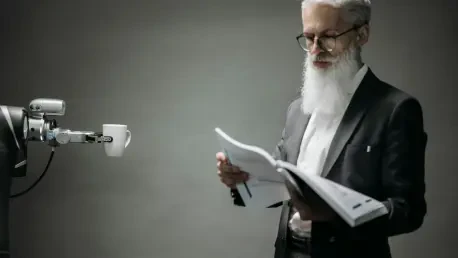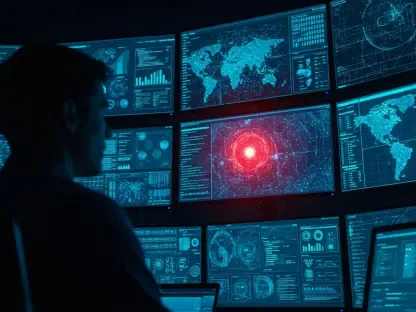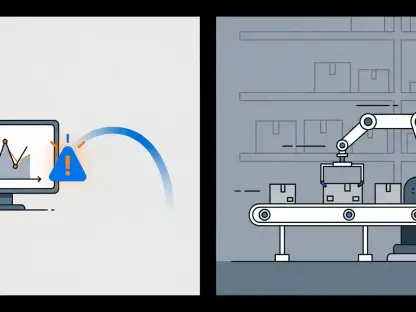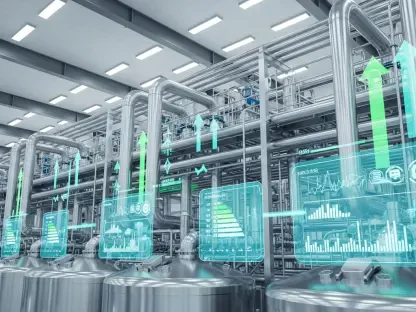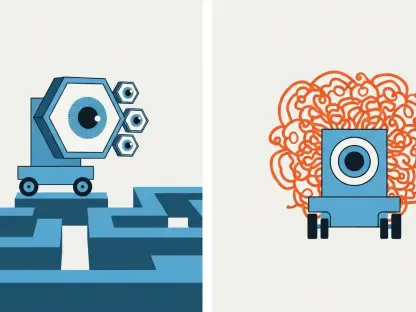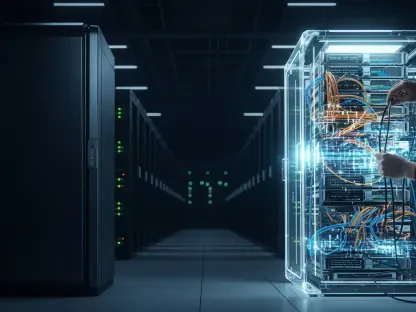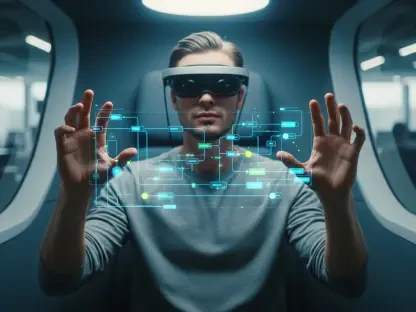Imagine a world where a fleeting thought can instantly become a fully realized digital artwork, or where a small business owner crafts a global marketing campaign in mere hours with the help of intelligent systems. This is the reality unfolding today as artificial intelligence reshapes the boundaries of human creativity. No longer confined to repetitive tasks, AI has emerged as a dynamic partner, blending human imagination with computational power to produce outcomes that seem almost enchanted. From design studios to corporate boardrooms, the integration of machine intelligence is unlocking new possibilities, making what once felt impossible now within reach. This transformation isn’t just about technology; it’s about redefining how ideas come to life across industries and empowering individuals with tools that amplify their vision.
The Synergy of Human and Machine Innovation
Redefining Collaboration with AI as a Creative Partner
The partnership between humans and AI marks a significant shift in creative processes, moving beyond traditional tools to a collaborative dynamic. Today, AI systems are not merely executing commands but actively contributing to ideation and execution. Platforms that integrate multimodal capabilities—combining text, images, and audio—enable creators to transform rough concepts into polished outputs with unprecedented speed. For instance, designers can now input voice prompts or basic sketches and watch as intelligent algorithms generate professional-grade visuals in minutes. This capability drastically cuts down iteration times, allowing for rapid prototyping in fields like product development and graphic arts. The seamless interaction between human intuition and machine precision fosters an environment where creativity is not limited by technical skill but enhanced by accessible, intelligent assistance.
Moreover, this collaboration extends into personalized outputs tailored to specific needs. AI systems analyze vast datasets to offer real-time suggestions, such as crafting marketing narratives that resonate with trending audience preferences. Small business owners, often constrained by resources, now find themselves equipped with sophisticated strategies that rival those of larger corporations. By handling complex data analysis and providing actionable insights, AI acts as a coworker, enabling users to focus on strategic vision while the technology manages intricate details. This synergy ensures that innovation is democratized, allowing individuals from diverse backgrounds to compete on a global stage with ideas that are both unique and impactful.
Turning Abstract Dreams into Tangible Creations
One of the most remarkable aspects of AI’s role in creativity is its ability to convert vague ideas into concrete results. Virtual reality animations, automated copywriting, and even intricate digital media can now be produced from minimal input, making complex processes accessible to novices and experts alike. This transformation empowers everyday users to bring their visions to life without needing years of specialized training. For example, a budding entrepreneur with a concept for a promotional video can rely on AI to script, design, and animate the content, bridging the gap between imagination and execution. Such advancements are reshaping industries by lowering barriers to entry and fostering a culture of experimentation and innovation.
Beyond individual projects, this trend has broader implications for creative communities. As AI tools become more intuitive, they enable collaborative platforms where ideas are shared and refined collectively. Artists, writers, and developers can now iterate on each other’s work in real time, with algorithms suggesting enhancements based on contextual analysis. This collective creativity amplifies the potential for groundbreaking outputs, as diverse perspectives merge with technological precision. Furthermore, the scalability of these tools means that what starts as a personal project can quickly evolve into a marketable product, driving economic opportunities. The magic lies in how AI makes the journey from dream to reality not just possible, but remarkably efficient.
Ethical and Sustainable Progress in AI Creativity
Balancing Innovation with Responsible Integration
As AI continues to redefine creative landscapes, the importance of ethical integration cannot be overstated. Combining AI with emerging technologies like blockchain and quantum computing offers immense potential for efficiency, such as automating secure transactions or accelerating data processing. However, challenges like energy consumption and inherent biases in algorithms pose significant risks. Experts emphasize starting with small-scale applications, such as idea generation tools, to test and refine these systems before broader implementation. Human oversight remains critical to ensure authenticity and fairness, preventing unintended consequences that could undermine trust. This cautious approach seeks to balance the excitement of innovation with the responsibility to mitigate harm.
Additionally, the ethical deployment of AI in creative fields requires addressing societal impacts. For instance, while AI can streamline workflows, it must not erode the value of human input or lead to job displacement without retraining opportunities. Policymakers and industry leaders are urged to develop frameworks that prioritize transparency and accountability, ensuring that AI serves as an enhancer of human potential rather than a replacement. Discussions in tech communities highlight the need for inclusive design, where diverse voices shape how these tools evolve. By embedding ethical considerations into the core of AI development, the industry can foster sustainable progress that benefits a wider audience while minimizing negative repercussions.
Economic Transformations Through AI Agents
AI’s influence on creativity also extends into economic spheres, particularly through agents that facilitate on-chain transformations in markets like cryptocurrency. These intelligent systems are projected to drive market caps into the billions over the coming years, from now through 2027, by automating complex financial interactions and creative asset management. For creators, this means new avenues to monetize digital content, as AI agents handle licensing, distribution, and royalty tracking with precision. Such capabilities open up global marketplaces for artists and innovators who previously lacked access to such infrastructure, fundamentally altering how value is created and exchanged in creative economies.
Furthermore, the integration of AI in economic systems empowers small-scale creators to navigate intricate financial landscapes with ease. By analyzing real-time data, these agents provide insights into market trends, enabling informed decisions about where to invest time and resources. This level of support transforms the creative process into a viable business model, where innovation directly correlates with economic gain. Beyond individual benefits, the ripple effect influences entire industries, as streamlined processes reduce overhead costs and increase accessibility. Reflecting on past implementations, it’s evident that AI-driven economic tools have reshaped traditional barriers, paving the way for a more inclusive and dynamic market environment.
Reflecting on a Creative Revolution
Looking back, the journey of AI in transforming creativity reveals a profound shift in how innovation unfolds across diverse fields. What stands out is the seamless partnership between human ingenuity and machine intelligence, which turns abstract ideas into tangible masterpieces with remarkable efficiency. Ethical frameworks play a pivotal role in guiding this progress, ensuring that technological advancements align with societal values. As industries adapt, the economic potential unleashed by AI agents redefines value creation, empowering creators in ways previously unimaginable. Moving forward, the focus should remain on refining these collaborative dynamics, investing in sustainable practices, and expanding access to cutting-edge tools. By prioritizing education and ethical guidelines, society can harness this momentum to inspire future generations, ensuring that the magic of AI-driven creativity continues to evolve responsibly.
